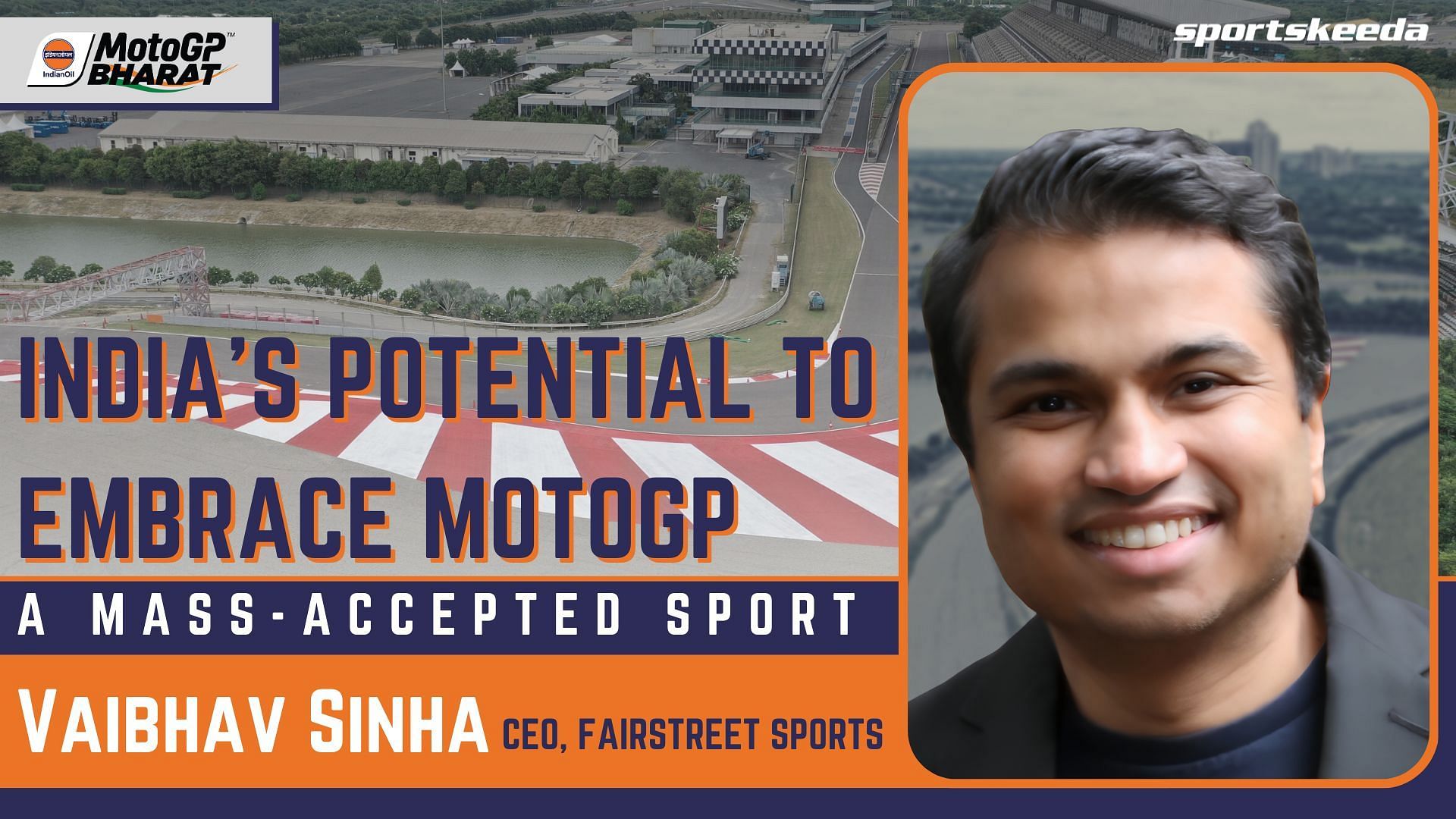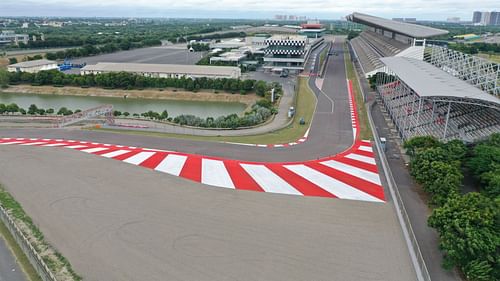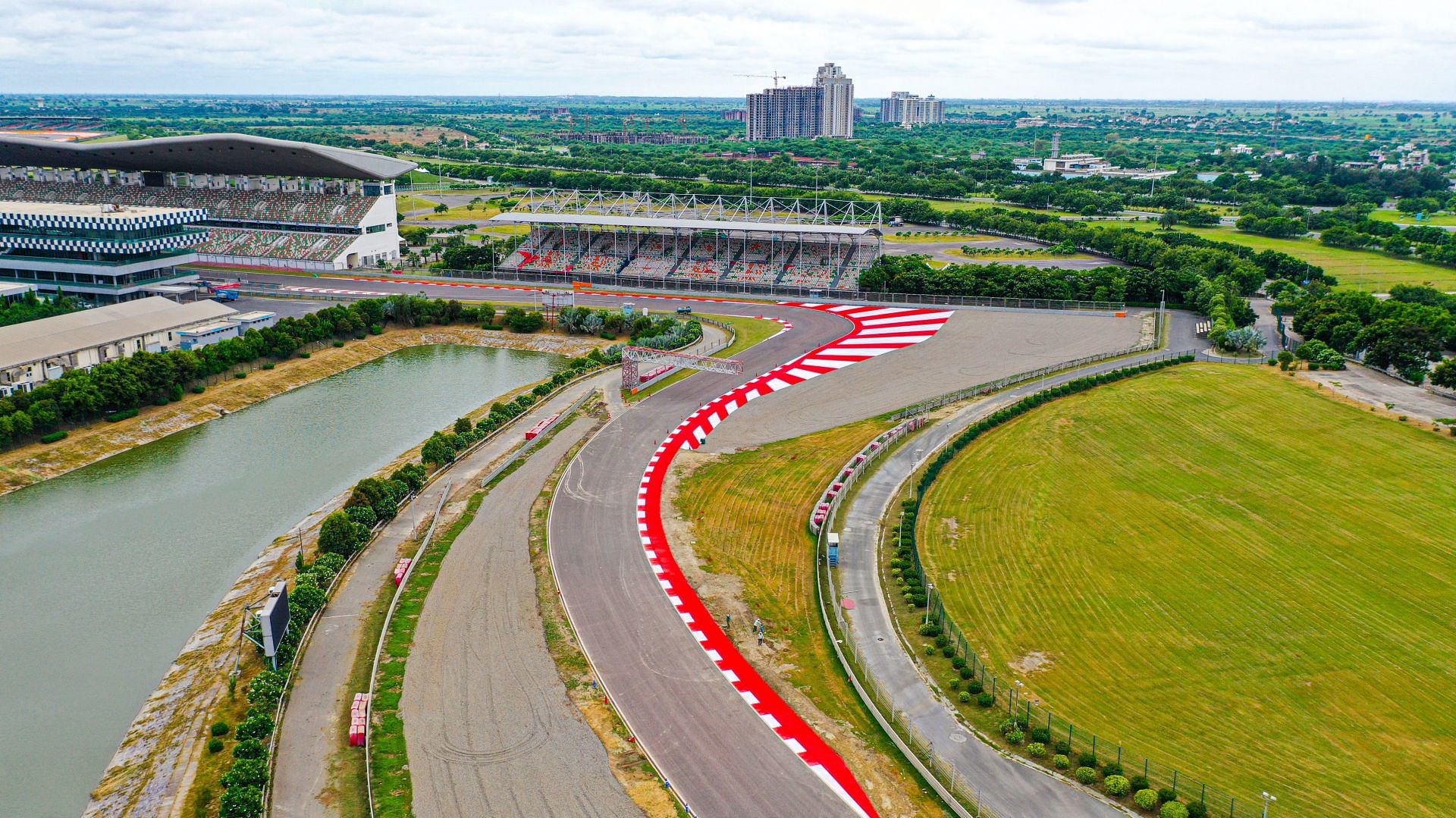
Discussing MotoGP's mass-acceptance potential in India with Vaibhav Sinha, CEO of Fairstreet Sports
With the MotoGP championship poised to debut in India at the Buddh International Circuit (BIC) in Greater Noida from September 22-24, 2023, the stage is set for a historic moment in the world of motorsports. This landmark event, proudly presented by IndianOil, promises to be a significant highlight on India's motorsport calendar and will be broadcast nationwide on Sports 18 and Jio Cinema.

The partnership with IndianOil as the title sponsor underscores the immense potential and market that India offers to the global MotoGP community.
In an exclusive interview conducted by Sportskeeda Business of Sports, we had the distinct honor of engaging in a conversation with Mr. Vaibhav Sinha, CEO of FairStreet Sports, who played a pivotal role in orchestrating the monumental event of MotoGP Bharat.
Mr. Sinha provided invaluable insights into the event's inception and its profound significance.
Excerpts from FairStreet Sports CEO Vaibhav Sinha's conversation with Sportskeeda
Q. With a rich history of motorsport in India, what were the key factors that led to your decision to bring MotoGP to India, and how does it align with the growing popularity of the sport?
Vaibhav Sinha: There is a huge potential for MotoGP to become a mass sport in India. The sport as it has been seen in Latin America and South America motorcycle is a more massy sport than Formula 1. To add to this, India is the largest two-wheeler market in the world. As per Nielsen Sports Fan Insights 2022 Report, with a staggering population of 1.4 billion and an annual sale of 18 million bikes, India stands as the largest global market for motorcycles.
The natural affinity between the audience, riders, and owners of motorcycles like Honda, Yamaha, KTM, and Ducati, which also happen to be the brands competing on the racing track, is a significant factor. This connection creates a genuine resonance with the sport and the teams, forging a strong bond between the audience and MotoGP. Even though Formula 1 is bigger than MotoGP globally, the potential for India to embrace the sport is immense. India is a market that is more accepting of a mass sport like MotoGP.
Q. Are there any grassroots programs in place to nurture local talents and enthusiasts in the sport?
Vaibhav Sinha: To make MotoGP a widely accepted sport in India, it's crucial to have more events and a sustained on-ground presence across the country, not just limited to one region. India already boasts a colossal fan base of 54 million, indicating a fervent appetite for MotoGP in the nation.
We have extensive plans to activate them through ancillary and supporting events that extend beyond the race weekend. The legacy aspect of the sport is essential, and we are putting these plans into action after the event race weekend race.
Q. How has the support of the U.P. Government aided in organizing this event, and could you elaborate on any initiatives and policies that have been made for the same?
Vaibhav Sinha: The support from the U.P. Government has been immense.
The first challenge that we overcame with the help of the U.P. Government was the availability of the track. Invest UP, an investment arm of the Uttar Pradesh government, has partnered with us to showcase the potential of U.P. as an investment destination for the automotive and biking industry.
A special conclave, “INVEST UP,” will be organized on the sidelines of the IndianOil Grand Prix of India, where 300 CXOs and global representatives will be participating.
Q. Indian Oil recently made news by becoming the official sponsor at this event. Being the first event of its kind in India, getting sponsorship is challenging. Could you maybe throw some light on how did it happen and how other sponsors have come on board?
Vaibhav Sinha: We have over 10 sponsors on board, such as Red Bull India, OLA, 24seven, Radio Mirchi 98.3, and R.E. Rogers India as event sponsors.
Alongside this, KTM India, Ducati India, Honda Racing India, Yamaha Motor India, Aprilia India, and Michelin have come on board as industry partners.
Indian Oil recently came on board as the title sponsor. The support from the industry has been remarkable, and you will witness their presence and activations at the event.
Q. Safety is paramount in motorsports. What safety measures have been implemented for the event, both from a racing and audience perspective?
Vaibhav Sinha: Safety is our top priority. For the audience, there are significant runoff areas and safety barriers to protect them.
There are sufficient washrooms and other provisions so that the race day experience is the best for the audience from a racing perspective, and the safety measures have kept on increasing in recent years. Every year, the FIA and Dorna strive to improve safety measures. We've invested a huge amount of money in providing and putting up safety barriers across the circuit. There are a lot of foam barriers over a meter in width, and air fencing.

The track, which was originally designed for cars, has now been prepared for bikes. There is more runoff area and more gravel on the sides. So there's a huge amount of safety measures we've taken to ensure rider safety.
There have been several modifications done to the Buddh International Circuit to make it ready for the IndianOil Grand Prix of India. The track is now FIM-certified and is ready to host the biggest biking spectacle in the world.
Q. MotoGP is a global product, but how are you incorporating Indian culture and technology to offer a unique experience to participants and fans?
Vaibhav Sinha: The race is truly a global product. It will reach 450 million homes in 195 countries with the help of a massive 90 broadcast network companies across the globe. The race gets broadcast through 180 live cameras at the track.
MotoGP also has 480 million engagements globally across all social media platforms, and 82% of those fans have been viewing the sport for over six years now. Meanwhile, MotoGP is fifth in terms of media visibility (329 million) among top sporting leagues, topped by Champions League football.
While the event remains global on the track. Off the track, we are providing a unique Indian experience to riders and teams, including Indian hospitality, cuisine, and cultural exposure. We have elaborate plans in place to showcase India as a partner and host.
Q. Hosting an international event has significant economic implications. Could you shed light on the economic impact this event will have and its potential for upcoming events?
Vaibhav Sinha: MotoGP events have left a substantial economic impact in host countries, averaging around 6 million euros. When translated to the Indian context, this amounts to approximately 950 crores, impacting various sectors such as air travel, hospitality, tourism, and more. Given the scale and uniqueness of our offering, we anticipate an even greater economic impact. India, being the largest global market for motorcycles, is poised to experience significant economic repercussions.
MotoGP races have a track record of generating a staggering 106 million euros from enthusiastic spectators and an additional 6.6 million euros in staff impact, contributing substantially to job creation. As thousands of international visitors stay in India and explore Delhi, Uttar Pradesh, and iconic places like the Taj Mahal, Ayodhya, and Kashi, we expect a considerable economic surge. While we don't have a direct precedent in India, historical data suggests that the impact could be even more pronounced, given the sheer scale of our event.